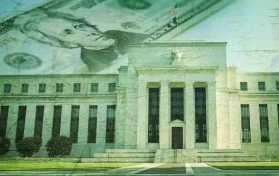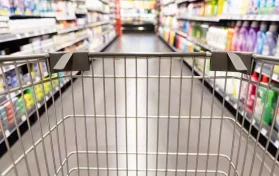
Inflation is gripping all sectors of the economy from fuel to groceries to energy, and now, wholesalers are reporting that prices have surged up 9.7 percent during the month of January. This was announced on Tuesday; prior to the announcement, most economists had expected a jump of .5 percent.
Again, most economists are blaming all-time high demand among consumers as well as continued chinks in the supply chain which have not fully resolved since late 2021.
On Tuesday, the Labor Department stated its producer price index, a measurement of wholesale prices prior to going to the consumer, jumped up 9.7 percent from January 2021. The producer price index has dropped one-tenth of a percentage point from November and December 2021, when the price was up by 9.8 percent. An unexpected price jump of one percent between December 2021 and January 2022 was a great deal more than the 0.4 jump from November to December 2021.
Expert economists at Refinitive had predicted that inflation in this area would rise by 9.1 percent in a year-over-year basis and 0.5 from December 2021.
Economists say that core inflation is the impetus for the increase. Core inflation numbers do not consider food and energy prices. For the past year, core inflation prices have jumped up nearly 7 percent, which is about the same as the record high reached in 2021.
This is the second week of discouraging economic news from the Labor Department. Last week, the entity released its monthly report which showed consumer prices were up 7.5 percent in January 2022 from the previous year. This was the biggest increase in four decades, when inflation surged up to 7.6 percent.
The result is all consumers are paying more for all goods, especially necessities. Consumers are also paying more for utilities, and the price of used cars is up by just over forty percent.
The Labor Department’s report, which shows that, for eight consecutive months, the CPI has been over five percent, is likely to prompt the Federal Reserve to raise interest rates next month. When the Fed met earlier this month, economists predicted a rate hike of .25 percent. Even Fed chair Jerome Powell said that raising interest rates should be carried out in a manner that was both “humble and nimble.” Now, after the Labor Department’s report last week and reports on Tuesday of surging wholesale prices, the Fed could very well raise interest rates by half a percentage point rather than one-fourth.
Unfortunately, this will have an effect on consumers across the board as well as businesses. Typically, when the Fed raises interest rates, consumers cut back on spending.
Managing Director of investment strategy at E-Trade, Mike Loewengart, lamented to Fox News, “At this point, it’s not a question of will they or won’t they – it’s a question of how many hikes we’ll see in 2022, and what the magnitude and pace will be.”
Economists initially predicted five rate hikes after the initial 2022 meeting of the Fed earlier this month; however, since last week’s Labor Department report, those same experts are now leaning more toward a possible seven interest rate hikes.
Loewengart also inferred that there is a great bit of uncertainty where the market is concerned.
Powell was blunt with his takeaways from the early 2022 Fed meeting; there could be a rate hike announced after every meeting of the Fed this year, with the next meeting coming in March. At the time, Powell mentioned “nimble” rate hikes, but he did not rule out the possibility of an aggressive half-point rate hike. Powell also told reporters after the Fed meeting: ‘We’re going to be led by the incoming data and the evolving outlook.”
The idea of rate hikes are to be expected, but consumers are concerned about how they will pay bills on mortgages, credit accounts, and other financial obligations while also paying for skyrocketing fuel prices and necessary grocery items.





